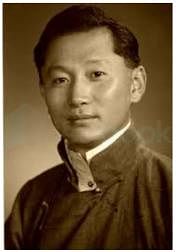Laxmikanth Test : Union and its Territory - UPSC MCQ
10 Questions MCQ Test Indian Polity for UPSC CSE - Laxmikanth Test : Union and its Territory
Consider the following pairs:
1. Forming a new State by uniting two or more States or parts of States - Requires prior recommendation of the President.
2. Increasing the area of any State - Does not require the views of the state legislature concerned.
3. Altering the boundaries of any State - Requires the views of the state legislature concerned.
4. Altering the name of any State - Parliament is bound by the views of the state legislature.
How many pairs given above are correctly matched?
Which of the following Union Territories is given partial statehood in India?
| 1 Crore+ students have signed up on EduRev. Have you? Download the App |
Consider the following statements:
Statement-I:
Parliament may form a new State by separation of territory from any State or by uniting two or more States or parts of States.
Statement-II:
Before recommending a bill related to changes in existing states, the President needs to refer the bill to the concerned state legislature, which can express its views within a specified period. The President (or Parliament) is not bound by the views of the state legislature and may either accept or reject them.
Which one of the following is correct in respect of the above statements?
Parliament may form a new State by separation of territory from any State or by uniting two or more States or parts of States.
Before recommending a bill related to changes in existing states, the President needs to refer the bill to the concerned state legislature, which can express its views within a specified period. The President (or Parliament) is not bound by the views of the state legislature and may either accept or reject them.
Consider the following statements:
1. A bill for the formation of a new state or alteration of an existing state’s boundaries can be introduced in Parliament only with the prior recommendation of the President.
2. The President is required to refer the bill to the state legislature concerned for expressing its views within a specified period before recommending the bill to Parliament.
3. The President is bound by the views of the state legislature when recommending the bill to Parliament.
Which of the statements given above is/are correct?
Consider the following statements:
Statement-I:
Part I of the Indian Constitution, titled The Union and its Territory, includes articles from 1-4 and deals with the establishment, renaming, merging, or altering of state borders.
Statement-II:
Article 2 of the Constitution deals with the admission or establishment of new states, granting Parliament the power to admit new states into the Union of India and to establish new states.
Which one of the following is correct in respect of the above statements?
Consider the following pairs:
1. Article 4: Laws made under Articles 2 and 3 are considered amendments under Article 368.
2. Article 2: Admission or establishment of new states.
3. Article 3: Formation of new states and alteration of areas, boundaries, or names of existing states.
4. Article 368: Amendment of the Constitution.
How many pairs given above are correctly matched?
Consider the following pairs:
1. Article 1: Deals with the Name and territory of the Union
2. Article 2: Deals with the renaming of States
3. Article 3: Deals with the formation of new States and alteration of areas, boundaries, or names of existing States
4. Article 4: Deals with laws made under Articles 2 and 3
How many pairs given above are correctly matched?
Consider the following statements:
1. Article 1 of the Constitution of India states that "India, that is Bharat, shall be a Union of States."
2. Article 2 of the Constitution of India grants the Parliament the power to establish new states but not to admit new states into the Union.
3. The territory of India, as defined in Article 1, includes the territories of the States, the Union territories specified in the First Schedule, and any other territories that may be acquired.
Which of the statements given above is/are correct?
Consider the following statements:
1. Laws made for the admission or establishment of new states under Article 2 and for the formation of new states and alteration of areas, boundaries, or names of existing states under Article 3 are not considered amendments of the Constitution under Article 368.
2. Such laws require a two-thirds majority in both houses of Parliament.
3. The Supreme Court has held that the power of Parliament to diminish the area of a state is granted under Article 3.
Which of the statements given above is/are correct?
|
144 videos|611 docs|204 tests
|
|
144 videos|611 docs|204 tests
|


















